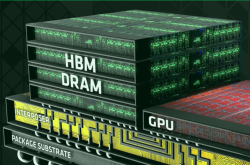The $500 Billion 'Stargate' Plan: A High-Stakes Gamble for the US in the AI Era?
![]() 07/04 2025
07/04 2025
![]() 576
576

Recent reports have revealed that AI behemoth OpenAI and global enterprise cloud service leader Oracle have announced a significant expansion of the 'Stargate' plan, with an additional investment exceeding $500 billion. The ambitious initiative aims to establish an AI computing power infrastructure network spanning the entire United States.
Launched jointly by OpenAI, SoftBank Group, and Oracle in January 2025 with an initial investment of $100 billion, the 'Stargate' plan envisions a four-year growth trajectory to reach a total investment of $500 billion. At its core, the project addresses the pressing 'infrastructure anxiety' of the AI era. Sam Altman, CEO of OpenAI, has openly expressed frustration with Microsoft's Azure cloud service, stating that it fails to meet the computing demands required for training ultra-large models such as GPT-5, resulting in model iterations lagging behind competitors like Google.
US President Trump has positioned the 'Stargate' project as the 'Manhattan Project of the AI Era,' intending to reinforce the US's global leadership in AI through substantial investments and create 100,000 high-tech jobs. The project spans 16 states, including Texas and Michigan, with some data centers situated adjacent to military bases, highlighting its strategic importance within the US's 'reindustrialization' efforts.
The 'Stargate' plan aspires to establish global AI computing power supremacy.
With the total investment in the 'Stargate' plan now at $500 billion, OpenAI and Oracle's grand vision is not merely to dominate the cutting-edge of next-generation AI technology but to redefine the global technology, economic, and geopolitical landscape through the construction of a comprehensive AI computing power infrastructure network across the US.
The ultimate objective of the 'Stargate' plan is to establish a vast computing power network comprising massive data centers, bespoke AI chips, and quantum computing simulation technology. Its scale and strategic significance are on par with the 'Manhattan Project' during World War II. The project envisages the construction of 25 supercomputing centers, with the inaugural Austin campus in Texas already deploying over 1 million NVIDIA Blackwell architecture GPUs, boasting a computing power density 15 times that of traditional data centers. By 2026, this network is projected to account for 35% of the global AI computing power market, posing a significant competitive threat to rivals.
'Stargate' is not merely a technological endeavor but an economic revolution. Its aim is to reshape the global industrial chain division of labor through computing power monopolization. The project mandates that over 60% of equipment must be sourced from US domestic vendors, directly bolstering the capacity of companies such as TSMC's Arizona factory and Intel's Ohio wafer fab, while simultaneously weakening other countries' global standing in chip manufacturing.
By collaborating with Tesla to establish an 'integrated wind, solar, and storage' network and piloting miniaturized nuclear fusion technology, the project aims to control the 'new oil' of the AI era – clean energy, thereby forming a technology-energy complex hegemony. While the plan aims to create 100,000 high-tech jobs, 80% of these positions are concentrated in the 'Rust Belt' of the US Midwest, a strategic move to fulfill the political promise of the Trump administration's 'Make America Great Again' agenda through technological dividends.
On the ethical and governance fronts, the 'Stargate' plan seeks to leverage technological advantages to gain rule-making power. The project deploys data centers in 16 states, including Abilene, Texas, with some located adjacent to military bases, forming 'data enclaves' that challenge extraterritorial regulations like the EU's AI Act. By opening up computing power resources to enterprises, the project will propagate OpenAI's ethical framework, potentially compressing the value space of AI enterprises in China and Europe. Furthermore, the plan establishes an 'AI Security Committee' led by the US Department of Defense and Department of Homeland Security, deeply integrating technological review with national security considerations.
OpenAI and Oracle publicly assert that the project aims to mitigate the risk of AI running amok. However, the underlying logic is to prevent other countries or enterprises from independently developing AGI (Artificial General Intelligence) by monopolizing computing power resources, thereby averting the 'technological singularity' from spiraling out of control. By embedding American values into the underlying AI architecture, the project ensures that superintelligence 'aligns' with human interests, albeit outputting an AI ethics framework that is inherently 'Western-centric.'
It is evident that the objectives of the 'Stargate' plan extend far beyond the realm of commercial competition. It represents a high-stakes gamble on the trajectory of human civilization in the AI era: steering towards a technological utopia or plunging into a digital dark forest? As OpenAI and Oracle place their bets on a $500 billion computing power network, they are wagering not just on the future of technology but on a new global order dominated by the US.
Is the 'Stargate' plan a technological high-stakes gamble?
Initiated jointly by OpenAI, SoftBank Group, and Oracle in January 2025 with an initial investment target of $100 billion, the 'Stargate' plan directly addresses the burgeoning demand for computing power necessitated by the exponential growth of AI model sizes. Sam Altman, CEO of OpenAI, has candidly stated that current cloud computing resources are inadequate for training ultra-large models like GPT-5, resulting in model iterations trailing behind competitors like Google.
The additional $500 billion investment is a direct response to this challenge. The US government has positioned the project as the 'Manhattan Project of the AI Era,' aiming to solidify the US's global leadership in AI through substantial investments and create 100,000 high-tech jobs. The Trump administration views 'Stargate' as a pivotal fulcrum in the 'reindustrialization' strategy, with some data center locations strategically placed near military bases, underscoring its geostrategic importance.
As this collaboration deepens, Oracle's role has fundamentally transformed, evolving from a cloud service provider to a core computing power supplier for 'Stargate.' OpenAI will lease an additional 4.5 gigawatts (GW) of data center power from Oracle, equivalent to the power generation capacity of a US nuclear reactor, capable of supplying electricity to millions of households.
Oracle plans to construct new data centers in Abilene, Texas, Wisconsin, and other locations, with the Abilene campus expanding to 2 gigawatts, accommodating hundreds of thousands of NVIDIA GB200 AI chips, and boasting a computing power density 15 times higher than traditional data centers. The two entities have jointly developed a 'quantum computing simulation platform,' seamlessly integrating Oracle's proprietary 'Exadata X10' liquid-cooled servers with OpenAI's custom AI chip 'Cosmos-2,' paving the way for future quantum-classical hybrid computing architectures.
By optimizing power distribution through AI algorithms, the data center's PUE (Power Usage Effectiveness) has been reduced to 1.07, nearing the theoretical limit. In partnership with Tesla and NextEra Energy, the energy synergy ecosystem has established an 'integrated wind, solar, and storage' green energy network, with select data centers piloting miniaturized nuclear fusion technology as a backup energy source, ensuring 100% utilization of renewable energy.
Is the 'Stargate' plan a high-stakes gamble or a historical inevitability? The $500 billion investment surpasses the combined capital expenditures of all global cloud vendors in 2024. Behind this bold wager lies a paradigm shift in AI technology, transitioning from a mere 'tool' to foundational 'infrastructure.' At the economic level, the project is anticipated to boost US GDP growth by 0.8% but may exacerbate global technological 'poverty-wealth differentiation,' potentially plunging developing countries into the quagmire of 'computing power colonialism.'
On the technical front, if the project succeeds, AI model training costs will plummet, and AGI may arrive a decade earlier than anticipated. Conversely, if it fails, the colossal debt may trigger a fresh wave of technological bubbles. OpenAI and Oracle have staked their claim on 'Stargate,' not merely on the future of computing power but on a global order fundamentally reshaped by AI. In this epic race, there are no spectators; only the gamblers of our era.



